Introduction
Understanding the fundamentals of project management is essential for anyone looking to lead projects successfully. Whether you’re a beginner just starting out or a seasoned professional seeking to refine your skills, mastering these project management core concepts and glossary of terms is crucial.
In this blog post, we address some of the most frequently asked questions about project management, providing clear and concise answers to help you navigate the complexities of managing projects effectively. From the importance of project management to key phases, tools, and techniques, this guide will equip you with the knowledge you need to excel in your project management journey.
Table of Contents
History And Development
| Time Period | Event | Description |
|---|---|---|
| Ancient Times | Construction of Pyramids, Great Wall of China, Roman Roads | Early examples of large-scale project management in construction, requiring planning and coordination. |
| 1910s | Gantt Chart Developed | Henry Gantt develops the Gantt chart, a visual tool for scheduling tasks, still widely used today. |
| 1950s | Formation of the Project Management Institute (PMI) | PMI is founded to promote project management practices and standards. |
| 1950s | Critical Path Method (CPM) and Program Evaluation Review Technique (PERT) | CPM and PERT are developed to optimize project schedules and manage time effectively. |
| 1960s | Adoption of Project Management in Defense and Aerospace | Formal project management methods are adopted in large, complex projects like defense and aerospace. |
| 1980s | Introduction of Computer-based Project Management Tools | Software like Microsoft Project is introduced, improving planning, scheduling, and tracking. |
| 1990s | Emergence of Agile Methodologies | Agile methodologies such as Scrum and Kanban are developed, focusing on flexibility and iterative progress. |
| 2000s | Expansion of Project Management Certifications | Certifications like PMP (Project Management Professional) become popular, standardizing knowledge and skills. |
| 2010s | Integration of Digital Tools and Cloud Computing | Project management software evolves with cloud-based tools, enabling remote collaboration and real-time updates. |
| 2020 | COVID-19 Pandemic Impact | Shift to remote project management practices and increased use of digital collaboration tools. |
| 2021 | Rise of Hybrid Project Management Approaches | Increased adoption of hybrid methodologies combining Agile and traditional approaches. |
| 2022 | Emphasis on AI and Automation in Project Management | Integration of AI and automation to enhance project planning, scheduling, and risk management. |
| 2023 | Focus on Sustainability and Resilience in Projects | Growing emphasis on sustainable practices and building resilience in project management strategies. |
What is a Project?
In Project Management, understanding the concept of a project is fundamental. A project is a temporary endeavor undertaken to create a unique product, service, or result. Unlike routine operations, which are ongoing and repetitive, projects have a defined beginning and end. They aim to achieve specific objectives within a set timeframe and budget.
It is important to know the essential project documents for each phase. You can also Download a Free project documentation checklist here.
Key Characteristics of a Project
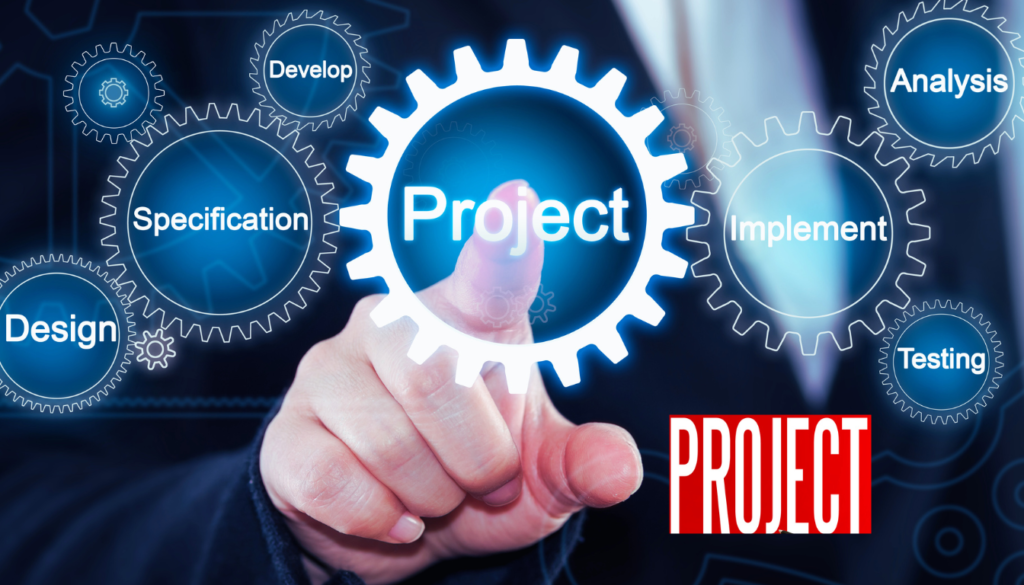
Temporary Nature
Projects have a clear start and finish. They are not indefinite; once the objectives are met, the project concludes.
Unique Deliverables
Each project produces a unique outcome. This could be a new product, an improved service, a piece of infrastructure, or any other specific result that didn’t exist before.
Progressive Elaboration
Projects develop in steps and continue by increments. Initial plans are elaborated into more detailed and precise plans as the project progresses.
Examples of Projects
Construction Project: Building a new office building, bridge, or residential complex.
- IT Project: Developing a new software application, implementing a new IT system, or upgrading an existing network.
- Marketing Project: Launching a new advertising campaign, rebranding a product, or organizing a large event.
- Research Project: Conducting a scientific study, developing a new technology, or exploring new market opportunities.
Importance of Defining a Project in Project Management
Defining a project clearly is crucial in Project Management for several reasons.
| Reason | Description |
|---|---|
| Clarity of Objectives | Clearly defined projects ensure that all stakeholders understand the goals and expectations. |
| Resource Allocation | Knowing the scope and requirements helps in allocating the necessary resources efficiently. |
| Risk Management | Understanding the project’s scope and context helps in identifying potential risks and planning mitigation strategies. |
| Performance Measurement | Defining a project with specific goals and deliverables allows for effective tracking of progress and performance. |
Understanding Project Management
Project Management is the art and science of planning, organizing, and managing resources to achieve specific goals. It involves applying knowledge, skills, tools, and techniques to project activities to meet the project requirements. Whether you are a beginner or a seasoned professional, understanding the fundamentals of project management is essential for delivering successful projects.
What is Project Management?
At its core, project management is about leading a team to achieve specific objectives within a defined timeframe and budget. It encompasses various processes, including initiation, planning, execution, monitoring, controlling, and closing. Each process plays a crucial role in ensuring the project stays on track and meets its goals.
Importance of Project Management

Project management is vital across all industries, from construction and IT to healthcare and marketing. Effective project management helps organizations:
Achieve Goals
Clearly defined objectives and structured plans ensure that projects meet their intended outcomes.
Optimize Resources
Efficient use of resources, including time, money, and personnel, prevents waste and enhances productivity.
Manage Risks
Identifying and mitigating risks early in the project lifecycle reduces the likelihood of project failures.
Enhance Communication
A structured approach to communication ensures all stakeholders are informed and engaged.
Key Roles and Responsibilities
In project management, several key roles contribute to the project’s success.
You can also Download a Free Project Management skills improvement checklist here.
| Role | Description |
|---|---|
| Project Manager | The project manager is responsible for planning, executing, and closing the project. They ensure the project meets its objectives, stays on schedule, and remains within budget. |
| Project Team | Comprising individuals with specific skills and expertise, the project team works collaboratively to complete project tasks and deliverables. |
| Stakeholders | These are individuals or groups affected by the project. They can include clients, sponsors, team members, and other interested parties. |
Essential Project Management Terms
To effectively navigate the world of project management, it is essential to understand the key terms and definitions commonly used in the field. Familiarizing yourself with these terms will not only help you communicate effectively with other project management professionals but also ensure that you have a clear understanding of the concepts discussed throughout this guide.
Project
A temporary endeavor undertaken to create a unique product, service, or result.
Stakeholder
An individual or group who has an interest or influence in a project.
Scope
The specific deliverables, features, and functions that define the project’s boundaries.
Timeframe
The duration allocated to complete the project, including start and end dates.
Budget
The estimated or allocated funds required to complete the project.
Risk
Any uncertain event or condition that could have a positive or negative impact on the project.
Quality
The degree to which the project fulfills the requirements and meets the stakeholders’ expectations.
Communication Plan
A document that outlines how project information will be shared with stakeholders.
Milestone
A significant event or accomplishment within a project that marks progress or completion of a phase.
Deliverable
A tangible or intangible product, service, or result that must be produced to complete the project.
Project Management Methodologies
In the field of project management, selecting the right methodology is crucial for the success of a project. A project management methodology is a set of principles, tools, and techniques that guide how a project is planned, executed, and completed.
Different methodologies offer various frameworks that cater to specific project needs and team dynamics. Understanding these methodologies can help project managers choose the most appropriate approach for their projects.
| Methodology | Description | Best For | Example |
|---|---|---|---|
| Waterfall | A linear, sequential approach where each phase must be completed before the next begins. | Projects with well-defined requirements and deliverables that are unlikely to change. | Construction projects where changes can be costly and time-consuming. |
| Agile | An iterative approach focusing on collaboration, customer feedback, and small, rapid releases. | Projects with dynamic requirements where customer feedback is crucial, such as software development. | Developing a new software application with evolving user requirements. |
| Scrum | A subset of Agile, designed for teams working on complex projects with short, time-boxed iterations called sprints. | Teams that benefit from close collaboration and frequent reassessment of progress. | A software development team working on a new feature with regular sprint reviews. |
| Kanban | Focuses on visualizing the workflow, limiting work in progress, and improving efficiency. | Projects that require continuous delivery and improvement, such as maintenance and support tasks. | A customer service team managing ongoing support tickets. |
| Lean | Aims to maximize value by minimizing waste and improving processes continuously. | Projects that require process optimization and efficiency, such as manufacturing. | Streamlining production processes in a manufacturing plant to reduce waste and improve quality. |
| Six Sigma | A data-driven methodology focused on improving quality by identifying and removing defects in processes. | Projects that require high-quality standards and precision, such as manufacturing and engineering. | Improving product quality in a factory by reducing defect rates. |
The Project Lifecycle
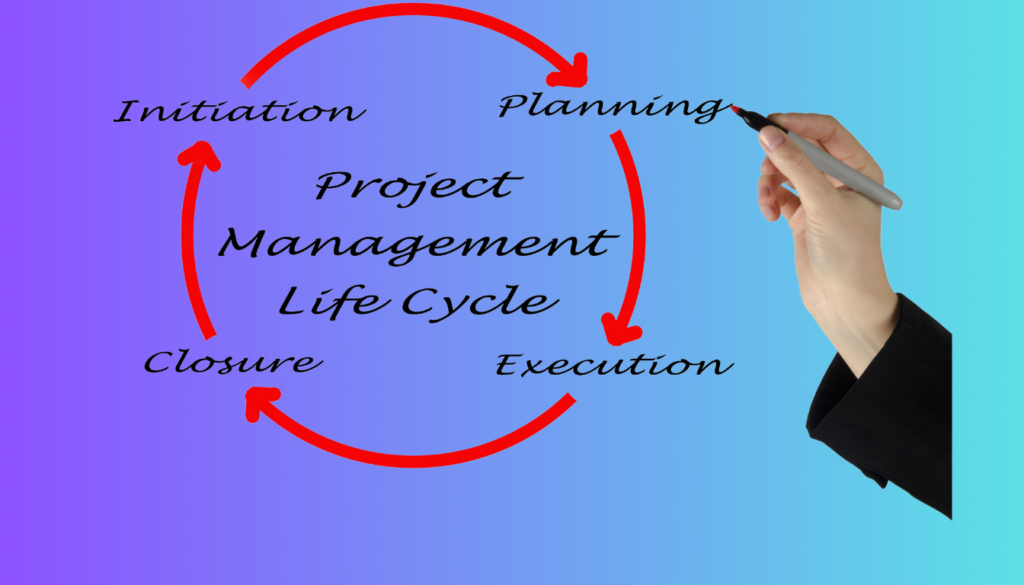
A typical project lifecycle includes the following phases:
- Initiation: Defining the project and obtaining approval.
- Planning: Establishing the scope, objectives, and procedures.
- Execution: Performing the work defined in the project plan.
- Monitoring and Controlling: Tracking progress and making adjustments as needed.
- Closure: Finalizing all activities and formally closing the project.
Planning and Scheduling
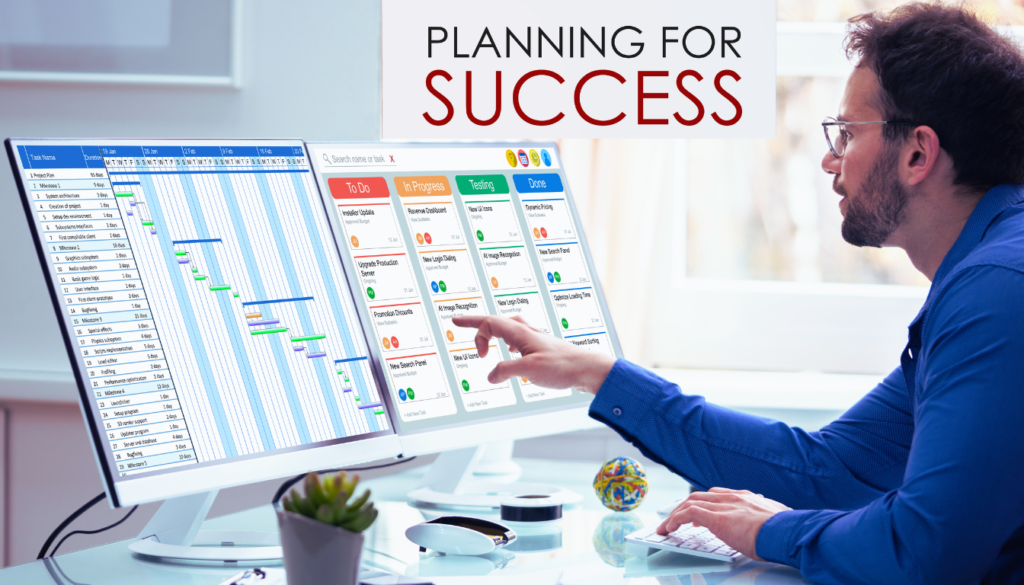
Effective project management hinges on detailed planning and scheduling. These foundational activities ensure that projects are executed smoothly, within budget, and on time. Let’s delve into the essential aspects of planning and scheduling in project management.
The Importance of Planning in Project Management
Planning is the process of defining project objectives and deliverables, determining the necessary steps to achieve those objectives, and identifying the resources required. It serves as the blueprint for project execution and involves:
- Setting Objectives: Clearly defined objectives provide direction and focus. They ensure that all team members understand the project goals and work towards a common purpose.
- Scope Definition: Outlining the project scope prevents scope creep and ensures that all project deliverables are identified and agreed upon.
- Resource Allocation: Effective planning identifies the resources needed, including personnel, equipment, and materials, ensuring they are available when required.
- Risk Management: Planning includes identifying potential risks and developing strategies to mitigate them, reducing the likelihood of project disruptions.
Project Plan-Schedule Checklist
For additional information, you can Download a free Project Plan-Schedule Checklist here which you can use to ensure that your plan/schedule is complete and realistic.
Key Elements of a Project Plan
A comprehensive project plan includes several key elements
| Key Elements of a Project Plan | Description |
|---|---|
| Project Scope Statement | Defines what is included and excluded from the project. This is also picked from statement of work (SOW). |
| Product Breakdown Structure (PBS) | This is a hierarchical decomposition of a project into smaller, more manageable components or products. |
| Work Breakdown Structure (WBS) | Breaks down the project into smaller, manageable tasks. |
| Resource Plan | Details the resources needed for each task. |
| Quality Management Plan | Identifies quality variables in the project and their management |
| Risk Management Plan | Identifies potential risks and outlines mitigation strategies. |
| Communication Plan | Describes how project information will be communicated to stakeholders. |
The Role of Scheduling in Project Management
Scheduling is the process of converting the project plan into a timeline with specific deadlines. It ensures that tasks are completed in a logical sequence and that resources are utilized efficiently. Key aspects of scheduling include:
Task Sequencing
Determining the order in which tasks should be performed, based on dependencies and priorities.
Time Estimation
Estimating the duration of each task to develop a realistic timeline.
Milestone Identification
Identifying significant points in the project timeline that mark the completion of key phases or deliverables.
Resource Scheduling
Assigning resources to tasks based on availability and project needs.
Tools and Techniques for Planning and Scheduling
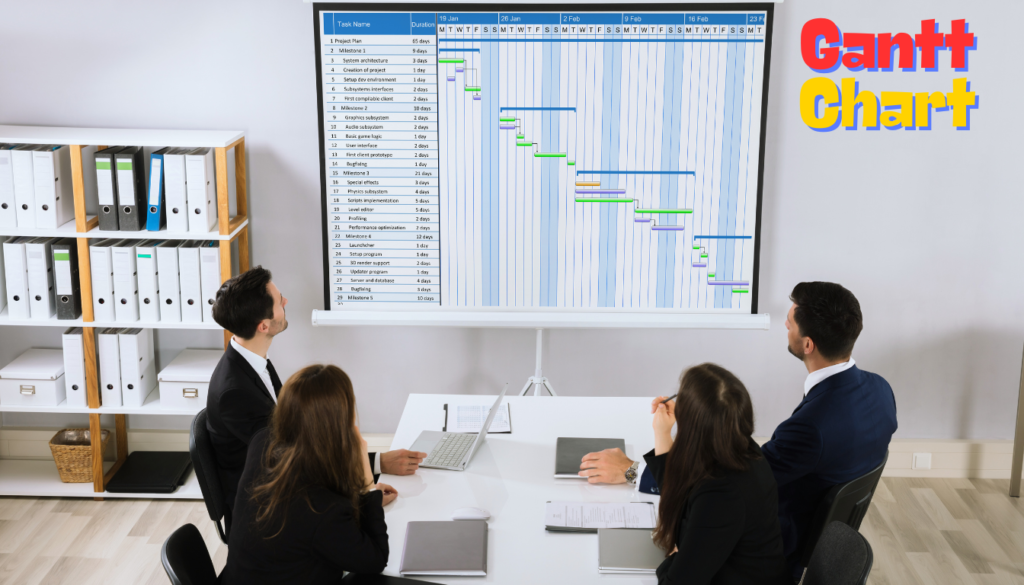
Several tools and techniques aid in effective planning and scheduling:
- Gantt Charts: Visual representations of the project schedule that show tasks, durations, and dependencies. They help in tracking progress and identifying potential delays.
- PERT Charts: Network diagrams that illustrate task sequences and dependencies, useful for identifying the critical path.
- Critical Path Method (CPM): A technique for determining the sequence of tasks that directly affect the project completion date.
- Project Management Software: Tools like Microsoft Project, Asana, and Trello help in planning, scheduling, and tracking project progress.
Best Practices for Planning and Scheduling

To ensure effective planning and scheduling, consider the following best practices:
- Involve Stakeholders: Engage stakeholders early in the planning process to ensure their needs and expectations are met.
- Be Realistic: Set achievable goals and timelines based on realistic assessments of resources and constraints.
- Monitor and Adjust: Regularly review the project plan and schedule, making adjustments as necessary to address changes and unforeseen challenges.
- Communicate Clearly: Maintain open lines of communication with all team members and stakeholders to keep everyone informed and aligned.
Risk Management
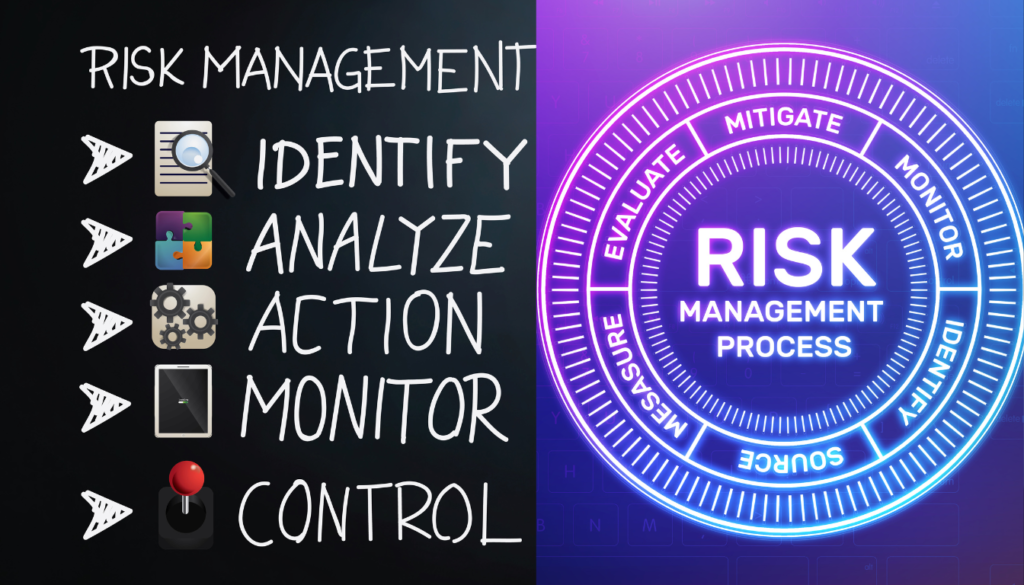
Effective Project Management involves not only planning and executing tasks but also anticipating and mitigating risks. Risk management is a crucial component that ensures project success by identifying potential problems before they occur and developing strategies to address them.
What is Risk Management?
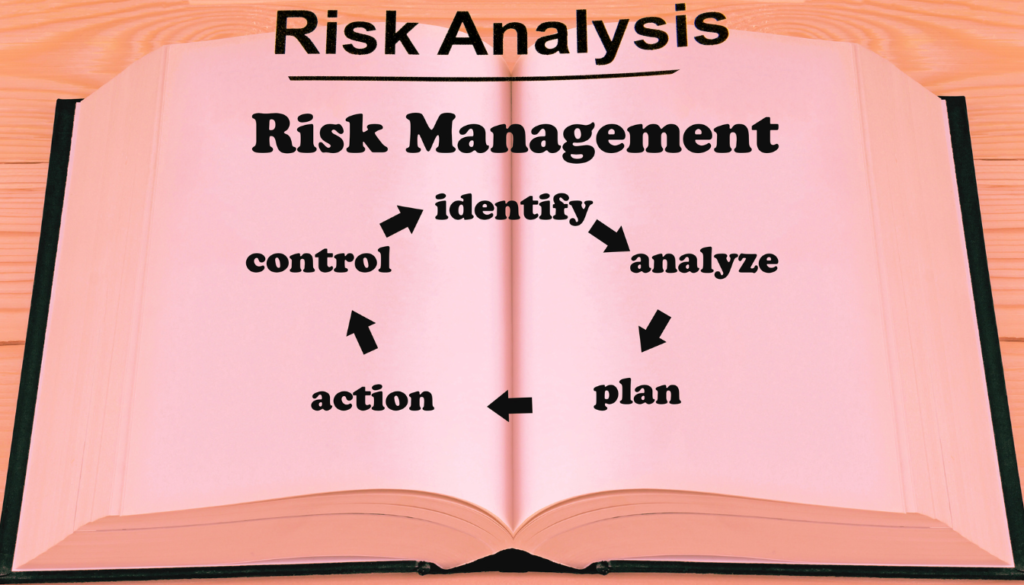
Risk Management in project management refers to the systematic process of identifying, analyzing, and responding to project risks. It involves understanding what could go wrong, evaluating the potential impact, and planning responses to mitigate or eliminate the negative effects on the project.
Importance of Risk Management in Project Management
- Proactive Problem-Solving: Identifying risks early allows project managers to address issues before they escalate, preventing potential project derailments.
- Resource Optimization: By understanding potential risks, resources can be allocated more effectively to mitigate these risks, ensuring optimal use of time, budget, and personnel.
- Stakeholder Confidence: Effective risk management demonstrates to stakeholders that potential challenges are being managed proactively, increasing their confidence in the project’s success.
Key Steps in Risk Management
| Key Steps in Risk Management | Description |
|---|---|
| Risk Identification | Identify all potential risks that could affect the project. This includes internal and external factors, such as technical challenges, resource constraints, regulatory changes, and market conditions. |
| Risk Analysis | Assess the likelihood and impact of each identified risk. This step helps prioritize risks based on their potential effect on the project. |
| Risk Response Planning | Develop strategies to mitigate or eliminate risks. Common strategies include: Avoidance: Changing the project plan to avoid the risk. Mitigation: Taking steps to reduce the likelihood or impact of the risk. Transfer: Shifting the risk to a third party, such as through insurance. Acceptance: Acknowledging the risk and preparing to deal with its consequences if it occurs. |
| Risk Monitoring and Control | Continuously monitor risks throughout the project lifecycle. Adjust risk management strategies as necessary and update stakeholders on risk status and responses. |
Tools and Techniques for Risk Management
Several tools and techniques can aid in effective risk management:
- Risk Register: A document that records all identified risks, their analysis, and planned responses.
- SWOT Analysis: Identifies strengths, weaknesses, opportunities, and threats related to the project.
- Risk Breakdown Structure (RBS): A hierarchical representation of risks, categorized by their sources.
- Monte Carlo Simulation: A statistical technique that models potential outcomes and assesses the impact of risks on project objectives.
Quality Management
Ensuring the quality of deliverables is paramount. Quality management encompasses the processes and activities that determine quality policies, objectives, and responsibilities. This systematic approach ensures that the project outputs meet the required standards and satisfy stakeholder expectations.
What is Quality Management?

Quality Management in project management refers to the coordinated activities that direct and control an organization with regard to quality. It involves planning, assurance, control, and continuous improvement to ensure that the project deliverables meet the required standards.
Importance of Quality Management in Project Management
- Customer Satisfaction: High-quality deliverables lead to increased customer satisfaction, which is crucial for the project’s success and the organization’s reputation.
- Cost Efficiency: Preventing defects through quality management can save costs associated with rework, delays, and non-compliance.
- Risk Reduction: Ensuring quality helps mitigate risks related to product failures, compliance issues, and customer dissatisfaction.
- Continuous Improvement: Quality management fosters a culture of continuous improvement, leading to better processes and outcomes over time.
| Key Components of Quality Management | Description | Activities |
|---|---|---|
| Quality Planning | Quality planning involves identifying the quality standards relevant to the project and determining how to meet them. This step sets the foundation for the other quality management activities. | Defining quality requirements, setting quality objectives, and developing a quality management plan. |
| Quality Assurance | Quality assurance focuses on providing confidence that quality requirements will be fulfilled. It involves systematic activities and processes to ensure that the project will meet the established quality standards. | Conducting audits, process evaluations, and quality reviews. |
| Quality Control | Quality control involves monitoring and measuring project outputs to ensure they meet the desired quality standards. It helps in identifying defects and implementing corrective actions. | Inspecting deliverables, testing products, and conducting peer reviews. |
| Continuous Improvement | Continuous improvement is an ongoing effort to enhance products, services, and processes. It aims to increase efficiency and effectiveness by making incremental improvements over time. | Implementing feedback loops, conducting regular reviews, and adopting best practices. |
Tools and Techniques for Quality Management
Several tools and techniques can aid in effective quality management:
- Cause-and-Effect Diagrams (Fishbone Diagrams): Identify potential causes of defects and focus on areas for improvement.
- Control Charts: Monitor process performance over time and detect any variations from the quality standards.
- Flowcharts: Visualize processes and identify areas for enhancement.
- Check Sheets: Collect and analyze data systematically to monitor quality performance.
- Pareto Charts: Highlight the most significant factors affecting quality, based on the Pareto principle (80/20 rule).
Resource Management
Resource management is a critical aspect that involves planning, allocating, and managing resources effectively to ensure the successful completion of a project. Resources can include:
- personnel
- equipment
- materials
- finances
What is Resource Management?
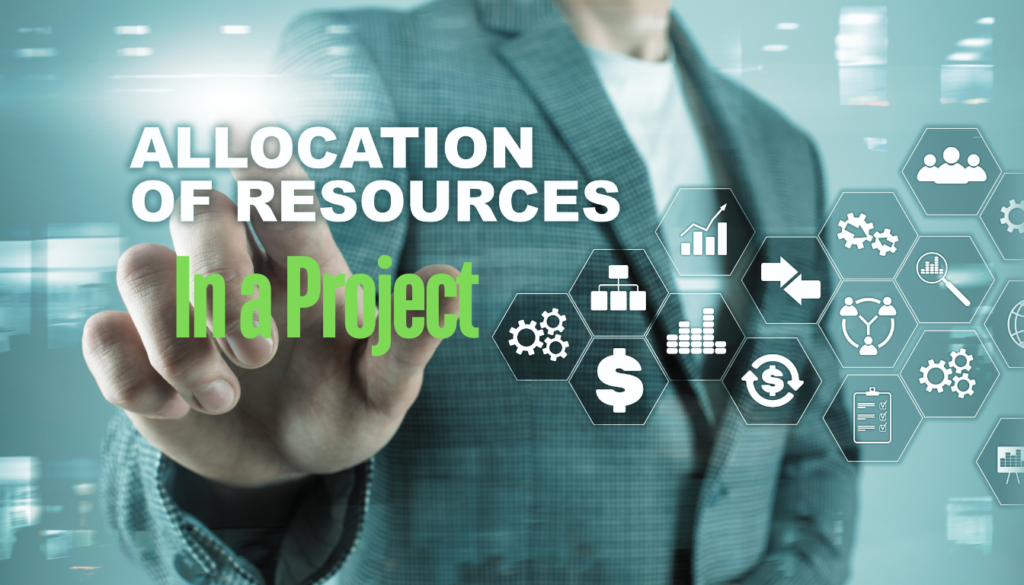
Resource Management refers to the process of planning, scheduling, and allocating resources to maximize efficiency and achieve project goals. It ensures that the right resources are available at the right time, preventing bottlenecks and delays.
Importance of Resource Management in Project Management
- Optimizes Resource Utilization: Efficient resource management ensures that resources are used optimally, reducing waste and increasing productivity.
- Enhances Project Efficiency: Proper allocation and management of resources help streamline project activities, leading to timely completion of tasks.
- Improves Budget Management: By effectively managing resources, project managers can control costs and prevent budget overruns.
- Reduces Risk: Identifying resource needs and potential shortages early helps mitigate risks associated with resource constraints.
| Key Elements of Resource Management | Description | Activities |
|---|---|---|
| Resource Planning | Resource planning involves identifying the resources needed for the project and determining the best way to allocate them. This step ensures that all necessary resources are available when required. | Creating a resource plan, estimating resource needs, and scheduling resource availability. |
| Resource Allocation | Resource allocation is the process of assigning available resources to specific tasks and activities. It ensures that resources are used where they are most needed and can contribute effectively to the project. | Assigning tasks to team members, allocating equipment and materials, and adjusting allocations as needed. |
| Resource Leveling | Resource leveling aims to resolve resource conflicts and ensure a balanced workload. It involves adjusting the project schedule to address over-allocation or under-utilization of resources. | Identifying resource conflicts, rescheduling tasks, and balancing resource loads. |
| Resource Monitoring and Control | This involves continuously tracking resource usage and performance to ensure that resources are being used as planned. It helps in identifying issues early and making necessary adjustments. | Monitoring resource usage, tracking performance, and making adjustments to resource plans. |
Tools and Techniques for Resource Management
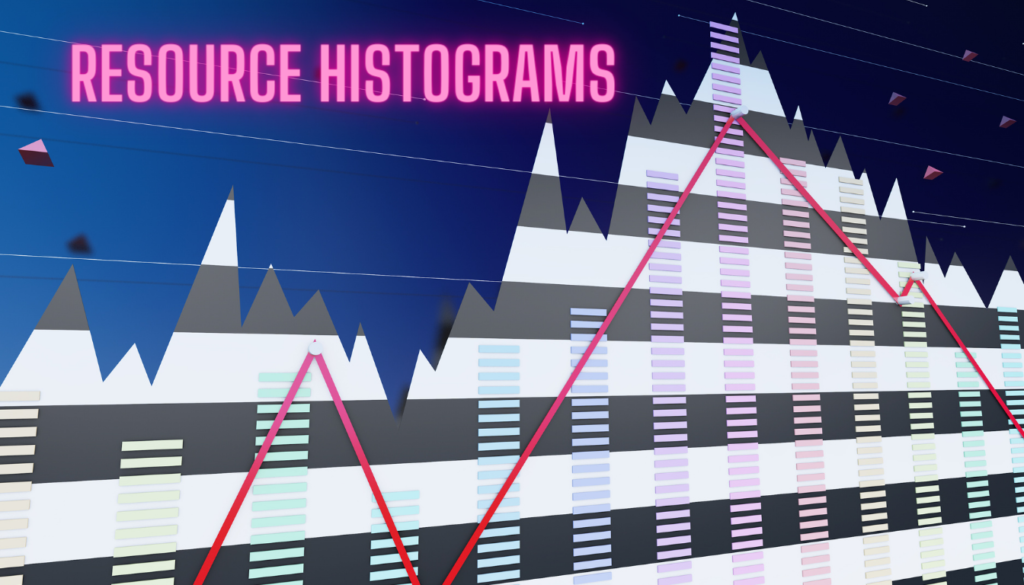
Several tools and techniques can aid in effective resource management:
- Resource Histograms: Visual representations of resource allocation over time, helping identify periods of over-allocation or under-utilization.
- Resource Allocation Matrix (RAM): A chart that shows the allocation of resources across different tasks and activities.
- Project Management Software: Tools like Microsoft Project, Asana, and Trello offer features for planning, allocating, and monitoring resources.
- RACI Matrix: A tool that defines the roles and responsibilities of team members, ensuring clarity in resource assignment.
Communication and Stakeholder Management
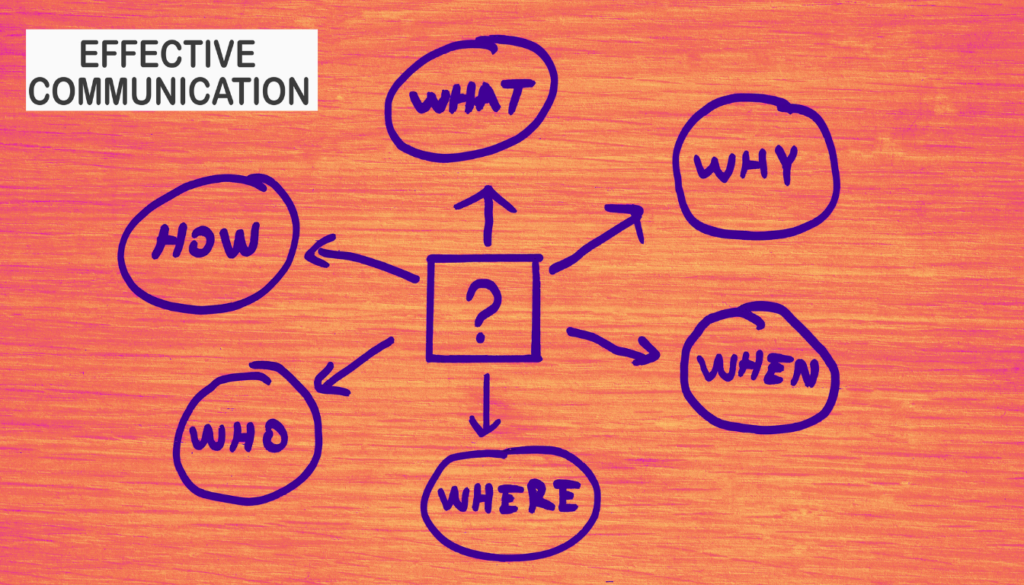
In the field of Project Management, effective communication and stakeholder management are crucial for the success of any project. Ensuring that all stakeholders are informed, engaged, and satisfied requires a systematic approach to both communication and stakeholder management.
The Importance of Communication in Project Management
Communication in project management involves the exchange of information between the project team and stakeholders. Effective communication ensures that everyone involved in the project understands the objectives, progress, and any issues that may arise. Key benefits of effective communication include:
- Clarity and Transparency: Ensures all stakeholders have a clear understanding of project goals, responsibilities, and progress.
- Improved Collaboration: Facilitates better teamwork and collaboration among project members.
- Enhanced Problem-Solving: Quick and effective communication helps in identifying and resolving issues promptly.
- Stakeholder Satisfaction: Keeps stakeholders informed and engaged, ensuring their needs and expectations are met.
Key Components of Communication Management
| Key Components of Communication Management | Description | Activities |
|---|---|---|
| Communication Planning | Developing a communication plan that outlines how information will be shared among stakeholders. This plan specifies the communication methods, frequency, and responsible parties. | Identifying stakeholders, determining communication needs, and creating a communication schedule. |
| Information Distribution | The process of making relevant information available to project stakeholders in a timely manner. Ensures that the right information reaches the right people at the right time. | Sending reports, conducting meetings, and using project management software to share updates. |
| Performance Reporting | Involves collecting and disseminating performance data to stakeholders. This helps in tracking progress and making informed decisions. | Generating status reports, performance dashboards, and progress updates. |
| Managing Stakeholder Expectations | Ensuring that stakeholder needs and expectations are understood and managed throughout the project lifecycle. Effective management of expectations prevents misunderstandings and increases stakeholder satisfaction. | Regular updates, feedback sessions, and stakeholder meetings. |
The Importance of Stakeholder Management in Project Management
Stakeholder Management involves identifying and engaging with all individuals or groups affected by the project. It ensures that their needs and expectations are considered and addressed. Key benefits of effective stakeholder management include:
- Increased Support: Engaged stakeholders are more likely to support the project and provide necessary resources.
- Reduced Resistance: By involving stakeholders early, potential resistance to project changes can be minimized.
- Enhanced Decision-Making: Stakeholder input provides valuable insights that can improve project decisions.
- Better Risk Management: Understanding stakeholder concerns helps in identifying and mitigating risks.
Key Components of Stakeholder Management
| Key Components of Stakeholder Management | Description | Activities |
|---|---|---|
| Stakeholder Identification | Identifying all individuals or groups that have an interest in the project. This step is crucial for understanding who the stakeholders are and what their interests might be. | Creating a stakeholder register, mapping stakeholder influence and interest. |
| Stakeholder Analysis | Analyzing stakeholder needs, expectations, and potential impact on the project. This helps in prioritizing stakeholders based on their influence and interest. | Conducting interviews, surveys, and analyzing stakeholder data. |
| Stakeholder Engagement Planning | Developing strategies to engage stakeholders effectively. This involves planning how to communicate and interact with stakeholders throughout the project. | Creating an engagement plan, setting engagement objectives, and defining communication methods. |
| Stakeholder Engagement and Monitoring | Implementing the engagement plan and continuously monitoring stakeholder interactions to ensure their needs are being met. | Holding regular meetings, providing updates, and gathering feedback. |
Monitoring and Controlling
In the domain of Project Management, monitoring and controlling are critical processes that ensure a project stays on track and meets its objectives. This phase involves tracking project performance, identifying any variances from the plan, and implementing necessary corrective actions.
What is Monitoring and Controlling?
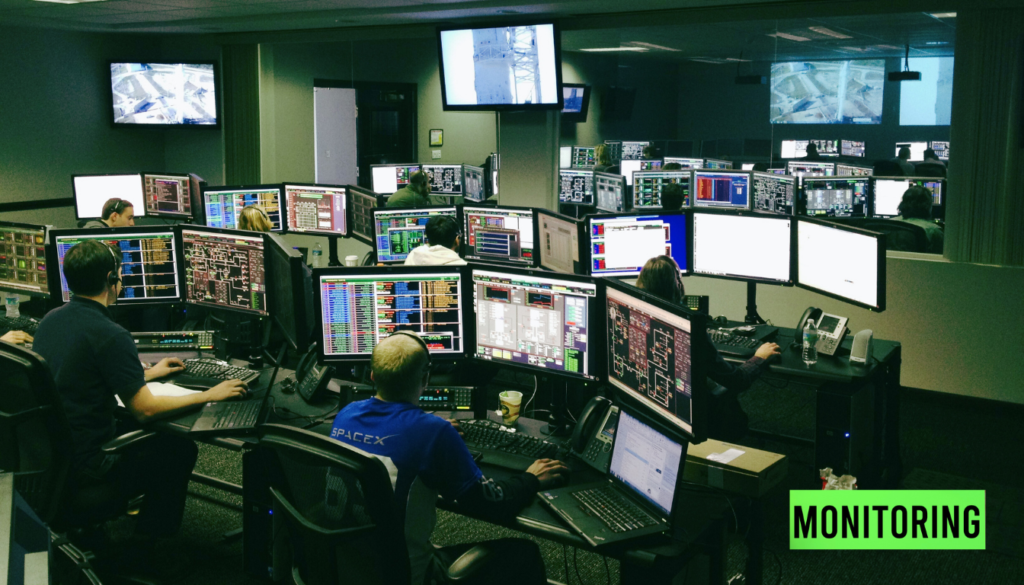
Monitoring and Controlling in project management refers to the systematic process of observing project activities and performance to identify any deviations from the plan. This phase ensures that project objectives are achieved by continuously measuring progress and implementing adjustments as needed.
Importance of Monitoring and Controlling in Project Management
- Ensures Project Alignment: Regular monitoring ensures that the project remains aligned with its objectives, scope, and schedule.
- Identifies Issues Early: Early detection of problems allows for timely intervention, preventing minor issues from becoming major setbacks.
- Improves Decision-Making: Continuous tracking provides project managers with accurate data to make informed decisions.
- Enhances Accountability: Monitoring activities increase transparency and accountability among team members and stakeholders.
Key Components of Monitoring and Controlling
| Key Components of Monitoring and Controlling | Description | Activities |
|---|---|---|
| Performance Measurement | This involves comparing actual project performance against the project plan to determine if there are any deviations. Key performance indicators (KPIs) and other metrics are used to assess progress. | Tracking KPIs, measuring deliverables, and evaluating project milestones. |
| Change Control | Change control is the process of managing changes to the project scope, schedule, and resources. It ensures that any changes are documented, reviewed, and approved before implementation. | Submitting change requests, evaluating impacts, and obtaining approvals. |
| Risk Monitoring and Control | This involves continuously identifying and managing project risks. It ensures that risk responses are effective and adjusts strategies as necessary. | Updating the risk register, monitoring risk triggers, and implementing risk response plans. |
| Quality Control | Quality control ensures that project deliverables meet the required quality standards. It involves inspecting and testing outputs to identify any defects or issues. | Conducting inspections, testing deliverables, and performing quality audits. |
| Status Reporting | Regular status reporting keeps stakeholders informed about project progress, issues, and any changes. It provides a clear picture of the current state of the project. | Preparing status reports, conducting progress meetings, and updating stakeholders. |
Tools and Techniques for Monitoring and Controlling
Several tools and techniques can aid in effective monitoring and controlling:
- Project Management Software: Tools like Microsoft Project, Asana, and Trello help track progress, manage changes, and report status.
- Gantt Charts: Visual timelines that show task progress and dependencies.
- Dashboards: Provide real-time data on project performance and key metrics.
- Earned Value Management (EVM): A technique that combines scope, schedule, and cost data to assess project performance and progress.
- Quality Management Tools: Checklists, Pareto charts, and control charts for monitoring quality.
Project Closure
In the realm of Project Management, project closure is the final phase that marks the completion of a project. This phase involves finalizing all project activities, ensuring that all deliverables have been completed, and obtaining formal acceptance from stakeholders. Proper project closure ensures that the project’s objectives have been met and that valuable lessons are captured for future projects.
What is Project Closure?
Project Closure is the process of concluding all project activities, handing over the deliverables to the client or stakeholders, releasing project resources, and documenting the entire project process. This phase ensures that all aspects of the project are wrapped up, and any remaining tasks are completed.
Importance of Project Closure in Project Management
- Formal Acceptance: Ensures that all deliverables are formally accepted by the client or stakeholders, confirming that the project has met its objectives.
- Resource Release: Frees up project resources, including team members, equipment, and budget, making them available for other projects.
- Documentation: Provides a comprehensive record of the project, including what was done, what was learned, and what can be improved in future projects.
- Lessons Learned: Captures valuable insights and lessons learned, which can be used to improve future projects and avoid similar issues.
Key Steps in Project Closure
| Key Steps in Project Closure | Description | Activities |
|---|---|---|
| Confirming Project Completion | Verify that all project deliverables have been completed and meet the required standards. Ensure that all project objectives have been achieved. | Reviewing project deliverables, conducting final inspections, and obtaining client or stakeholder approval. |
| Handing Over Deliverables | Transfer the completed deliverables to the client or stakeholders. Ensure that they are satisfied with the results and have all the necessary documentation and training. | Delivering final products, providing user manuals and training, and obtaining formal sign-off. |
| Releasing Project Resources | Release all project resources, including team members, equipment, and budget. Ensure that team members are reassigned to new projects or tasks. | Conducting team debriefs, returning equipment, and closing project accounts. |
| Conducting Post-Project Review | Review the entire project to identify what went well, what didn’t, and what could be improved. Document these insights in a lessons learned report. | Holding a post-project review meeting, gathering feedback from team members and stakeholders, and compiling a lessons learned report. |
| Documenting Project Closure | Ensure that all project documents are completed, archived, and accessible for future reference. This includes contracts, agreements, project plans, and reports. | Completing final project documentation, archiving project files, and updating project records. |
Application of Artificial Intelligence to Project Management
Artificial Intelligence (AI) is transforming various industries, and Project Management is no exception. The integration of AI into project management practices enhances efficiency, decision-making, and overall project success. Here are some key applications of AI in project management:
Predictive Analytics
- Description: AI uses historical project data to predict future outcomes, helping project managers anticipate potential risks and issues before they occur.
- Benefits: Improves risk management, enhances decision-making, and increases project success rates.
Automation of Routine Tasks
- Description: AI-powered tools can automate repetitive tasks such as scheduling, progress tracking, and reporting, freeing up project managers to focus on more strategic activities.
- Benefits: Increases efficiency, reduces human error, and saves time.
Enhanced Resource Management
- Description: AI can analyze resource utilization patterns and provide insights on optimal resource allocation, ensuring that resources are used effectively and efficiently.
- Benefits: Optimizes resource utilization, reduces waste, and ensures project timelines are met.
Improved Decision-Making
- Description: AI algorithms can process large amounts of data and provide project managers with actionable insights, helping them make informed decisions quickly.
- Benefits: Enhances the accuracy of decisions, reduces decision-making time, and supports strategic planning.
Intelligent Scheduling
- Description: AI tools can create and adjust project schedules based on real-time data, considering various constraints and dependencies to optimize timelines.
- Benefits: Ensures more accurate and flexible scheduling, adapts to changes efficiently, and minimizes delays.
Risk Management
- Description: AI can identify and analyze risks more effectively by examining patterns and correlations in project data, enabling proactive risk mitigation.
- Benefits: Improves risk identification, enhances risk mitigation strategies, and increases project resilience.
Enhanced Communication and Collaboration
- Description: AI-driven chatbots and virtual assistants can facilitate communication and collaboration among team members by providing instant access to information and answering queries.
- Benefits: Improves team communication, enhances collaboration, and increases productivity.
Performance Monitoring
- Description: AI tools can continuously monitor project performance, providing real-time updates and alerts on key performance indicators (KPIs) and project milestones.
- Benefits: Provides real-time visibility into project status, enables early identification of issues, and supports timely interventions.
Conclusion
Effective project management is critical to the success of any project, ensuring that objectives are met, resources are used efficiently, and stakeholders are satisfied. Throughout this guide, we have explored various essential components of project management, from understanding what constitutes a project to detailed discussions on planning, scheduling, risk management, quality management, resource management, communication, stakeholder management, monitoring, controlling, and project closure.
Points to Note:
- Thorough Planning and Scheduling: Proper planning and scheduling set the foundation for a successful project. This involves defining clear objectives, identifying resources, and creating a realistic timeline.
- Proactive Risk Management: Identifying and mitigating risks early can prevent minor issues from escalating into major problems.
- Maintaining Quality: Ensuring that deliverables meet the required standards through quality assurance and control is crucial for project success.
- Efficient Resource Management: Allocating and managing resources effectively ensures that the project progresses smoothly without unnecessary delays or wastage.
- Effective Communication and Stakeholder Management: Keeping stakeholders informed and engaged throughout the project helps in aligning their expectations and gaining their support.
- Continuous Monitoring and Controlling: Regularly tracking project progress and making necessary adjustments ensures that the project stays on course.
- Comprehensive Project Closure: Properly closing the project by handing over deliverables, releasing resources, and documenting lessons learned wraps up the project neatly and provides valuable insights for future projects.
Final Thoughts
The success of a project hinges on the project manager’s ability to integrate these components seamlessly. By understanding and applying the principles of project management, project managers can lead their teams to achieve project goals efficiently and effectively.
Remember, the key to successful project management is not just in the planning but also in the execution and continuous improvement throughout the project lifecycle. Each project offers opportunities to learn and grow, making it essential to document experiences and leverage those insights in future projects.
As you move forward in your project management journey, keep these principles in mind and strive for excellence in every project you undertake. The tools, techniques, and best practices discussed in this guide will equip you with the knowledge to tackle challenges head-on and deliver successful projects consistently.
Call to Action
If you found this blog post informative, be sure to subscribe to our newsletter for more insights and updates on the latest trends in project management. Share this post with your colleagues and fellow project managers to spread the knowledge and encourage the adoption of best practices in project management. Let’s continue to achieve project excellence together.
FAQ
What is project management?
Project management is the application of knowledge, skills, tools, and techniques to project activities to meet project requirements. It involves planning, executing, and closing projects, ensuring that they are completed on time, within budget, and to the desired quality standards.
Why is project management important?
Project management is crucial because it ensures that projects are completed efficiently and effectively. It helps in setting clear goals, managing resources, mitigating risks, and ensuring stakeholder satisfaction. Good project management can lead to successful project outcomes and organizational growth.
What are the main phases of a project lifecycle?
The main phases of a project lifecycle are:
- Initiation: Defining the project and getting approval.
- Planning: Establishing the scope, objectives, and procedures.
- Execution: Performing the work defined in the project plan.
- Monitoring and Controlling: Tracking progress and making adjustments.
- Closure: Finalizing all activities and formally closing the project.
What is the role of a project manager?
A project manager is responsible for planning, executing, and closing projects. Their role includes defining project scope, developing schedules, managing resources, monitoring progress, and communicating with stakeholders to ensure the project meets its goals and objectives.
How do you handle risks in project management?
Risk management involves identifying, analyzing, and responding to project risks. Key steps include:
- Risk Identification: Recognizing potential risks that could affect the project.
- Risk Analysis: Assessing the likelihood and impact of identified risks.
- Risk Response Planning: Developing strategies to mitigate or eliminate risks.
- Risk Monitoring and Control: Continuously tracking and managing risks throughout the project.
What tools are commonly used in project management?
- Gantt Charts: Visual timelines for project scheduling.
- Project Management Software: Tools like Microsoft Project, Asana, and Trello for planning and tracking projects.
- Risk Management Tools: Risk registers and risk assessment matrices.
- Communication Tools: Email, messaging apps, and collaboration platforms like Slack and Microsoft Teams.
What is the difference between project scope and project deliverables?
- Project Scope: The boundaries of the project, defining what is included and what is not. It outlines the project’s objectives, tasks, and deliverables.
- Project Deliverables: The tangible or intangible outputs produced as a result of project activities. Deliverables are specific items or services provided to stakeholders upon project completion.




